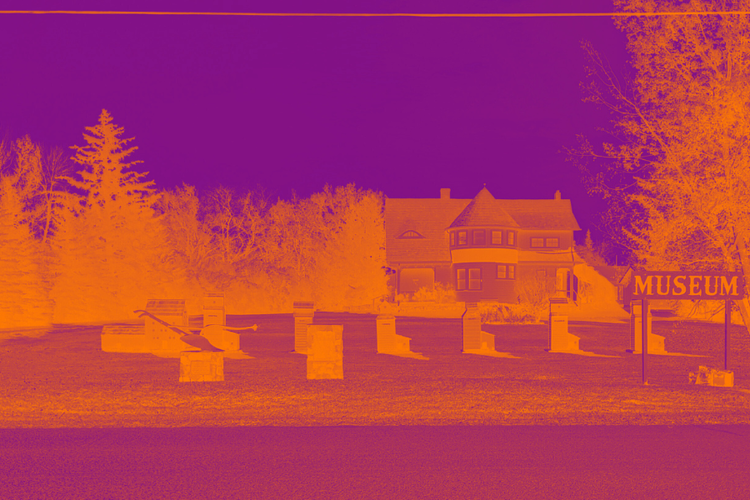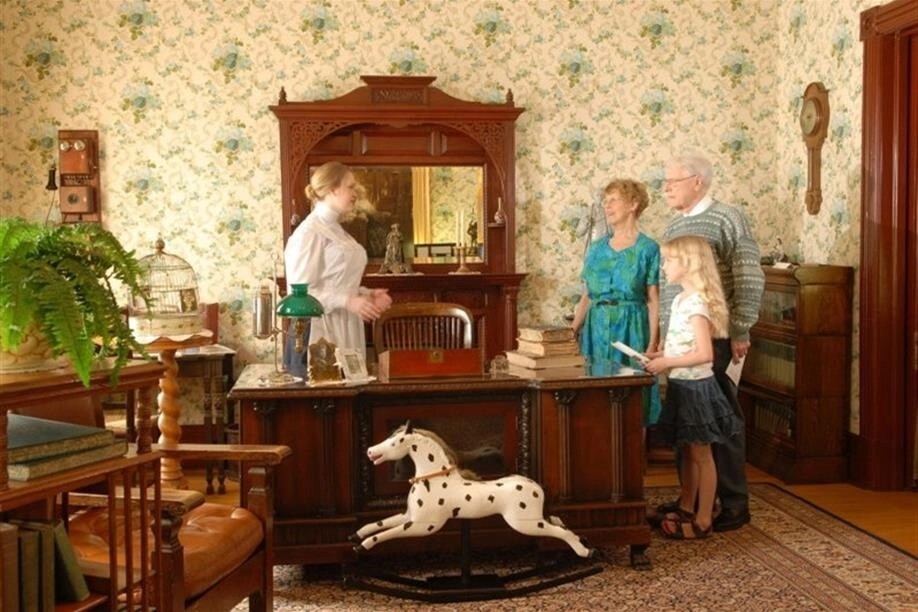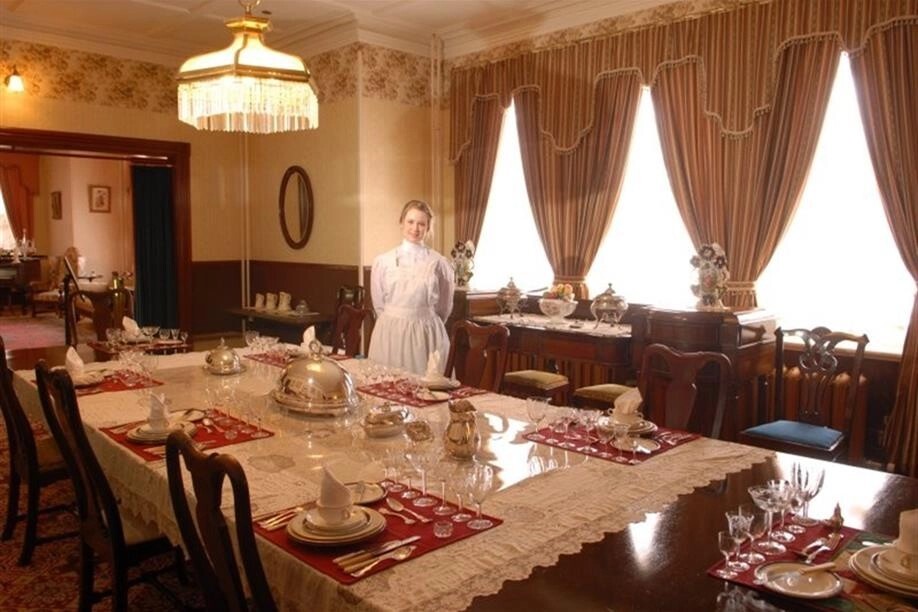Oct 6, 2025 This is the second in our 2025 Haunted Heritage blog series. See all the entries in the series here. Many of us who call Saskatchewan home have heard of or even experienced some of its many haunted spaces. For example, having worked at Government House for several years in university, I got comfortable speaking to the spirits that are said to haunt the 1891 Victorian home. Though I never saw one, I felt like there was enough of a presence that to spend so much time in their space and not at least acknowledge them may result in my being remembered in the afterlife as the rude girl in Victorian costume. Given that, following its time as a home for the Vice Regal family of the North West Territories and then Saskatchewan, it served as a convalescent home following WWII, and finally an adult education centre before the Lieutenant Governor’s offices returned in 1984, it is understandable that the building itself would host a manifestation of that energy in some form. Heritage places – whether buildings, landscapes, landmarks, or collections – have memory. One of the most frequently referenced examples is that of Auschwitz. Numerous people who have visited the site over the last couple of decades have remarked on the silence. It’s not just a sense of reverence among the visitors and staff, but a profound silence. As if the birds won’t fly overhead and the insects go around. Heritage isn’t only told by historians and heritage professionals, in these cases, nature holds its own memories. Though most often applied to places of extreme violence and atrocities, it is possible that the memory of our places affects how they are experienced today. If we apply this concept to heritage spaces in Saskatchewan, we can explore our province with an altered perspective. Why do we choose to share the stories we do, and how do we explain the darkest parts of our own histories? The stories we have inherited are layers upon layers of facts, experiences, fantastical or heroic elaboration, personal and cultural perspectives, trauma, emotional responses, and lore developed to explain the unexplainable. Our collective heritage places have the honour of holding these stories, and oftentimes choose to share these stories to fit a certain narrative, that of righteous peoples who worked hard to survive and thrive. This approach applies to the settlers and immigrants who came here over many generations, as well as to Indigenous peoples who have known this land since time immemorial. These stories are expected to reflect an array of human experiences, but how do you explain the way you feel when you walk into a collection space with restless ancestors? How do you weave the stories that those who came before us told their children to keep them safe into an intellectualized approach to heritage without patronizing the lived experiences of real people? There is no shortage of tales of not only ghosts and apparitions, but there is little mention of the Nisse or Tomte, Baba Yaga, and Ruggaroos alongside the stories of the people who came before us. There is a sort of unspoken expectation within heritage professions, that we try to remain objective. As if we get too close to the stories and the people who lived them, we are no longer capable of communicating anything believable. But we do care. That’s why we do what we do. The Titanic without the stories of the people it affected is just a wrecked ship at the bottom of the Atlantic. Likewise, without the questions of what it could mean for the people who lived before us, sites like the Crooked Bush and the St. Louis Ghost Train are just abnormalities. It’s the personal connections experienced through our research, collections, and heritage places that make our stories worth telling. While Fort San is no longer somewhere that people can visit, it was once a major landmark in Saskatchewan’s landscape, both physical and legendary. There are scores of stories from people who visited the institution that once served as our province’s largest sanatorium in more recent times. They tell of pressure on their chests and creepy sounds of wheels up and down the hallways of the vacated healthcare facility. But is it possible that these “hauntings” are a physical memory of the experiences of the people who were patients at Fort San? Imagine the thousands of people who were suffering, scared, and in pain in this building, alongside the worry and care of the nurses, doctors, and family members. Imagine the anger felt by the remote and Indigenous communities who were disproportionately affected by Tuberculosis in our province. When considered from this perspective, the reality is much too grim. It is much more palatable to consider the space haunted by malevolent spirits than to give credence to the possibility that we are experiencing a kind of empathy, from one human to another, across generations through the memory of place. People who work at heritage places, specifically museums and heritage sites, often find themselves in those roles due to a real passion for the subject matter. There are many aspects that go into these roles, whether the care for collections and research behind the scenes, or thoughtful and enthusiastic delivery of the story for visitors as the first point of contact. There is a level of performance and professionalism that must be transferred. For example, when I had the opportunity to work as a tour guide, the best part of my job was telling stories that made the history of the place feel real. Kids especially loved to hear about how things were in 1905, including what they ate, how they would have entertained themselves, and the difference in how the family would have interacted with each other in comparison to today. In order to deliver this performance effectively, heritage workers take on the emotional labour of navigating some of the more difficult aspects of our histories. Likewise, the people who work behind the scenes in record management, collection care, exhibit design, or administration also have to take on some degree of this emotional labour, but they do not have the expectation to perform for visitors. This affects heritage workers, whether positive or negative, and often both, because they do care about the real human lives that were affected. While the job expects objectivity, human nature searches for connection. This emotional investment can sometimes feel contrary to objectivity. And while they may not all talk about it, I would argue that most heritage workers do find that connection across generations. Through research, we learn and share about the stories in our care. And in some ways, the spirits we encounter are something like the presence that we feel in heritage spaces. However there are also the real spirits kept in many museums. The Indigenous ancestors and the spirits of sacred objects are present in many collections. People I have talked to who care for these ancestors kept in collections feel a responsibility for respectful care until they are returned home, as well as a personal connection to the spirit of the belonging. As heritage professionals, we don’t limit our interest or care to the hard facts of history, but we care about the people whose stories and belongings we are entrusted to care for, as well as the spirits that remain in our care in one manner or another. Like nature remembers, so do places. Museums are often entrusted to care for stories, those elevated to the forefront of our authorized discourse, as well as those too painful or difficult to share. But as we begin to explore the roles of museums in reuniting families and communities with their ancestors and belongings, we are learning more and more of close and personal relationships between the stewards and the spirits inhabiting these artefacts. While it is not discussed in textbooks or guides for standards and best practices, there are few museum workers who have not developed a sense of connection to an object or space. These rather common experiences are often pushed to the margins in favour of much more acceptable stories that are based in science and tradition of heritage practices. As we continue to explore what cultural heritage means to the people of Saskatchewan and all of the places and experiences that it includes, it is necessary to consider that we are not alone in these spaces. We are not the first to hold these stories close and we are not the first to witness the loves, losses, success, and tragedies of those who came before us. The fields and forests and churches and rivers, the schools and cemeteries and dinner tables and campgrounds, the fireflies and northern lights and earth beneath our feet, the buildings and everything within and beyond their walls remembers. Our places remember our stories. Emma Morris is the Executive Director of the Museums Association of Saskatchewan. Learn more about their work, resources and courses at saskmuseums.org.Our heritage lives in the places that shape our stories

Sharing heritage stories

Photo courtesy of Tourism Sask, 2011People, emotions, collections

Photo courtesy of Tourism Sask, 2011Our places remember our stories
